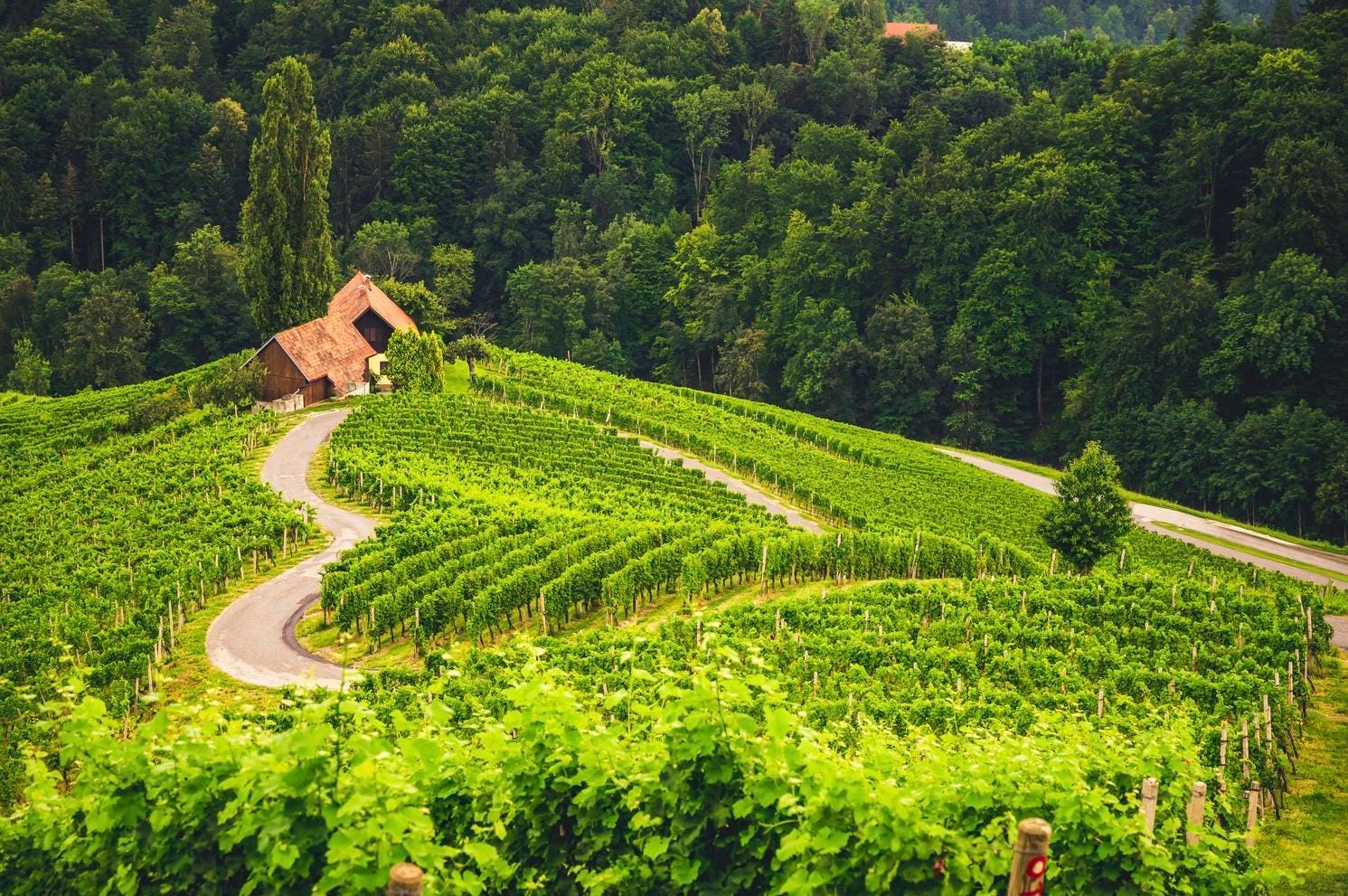Europe’s 10 Greenest Capitals: Sustainable City Breaks For 2025
5 min read
For eco-conscious travelers seeking a sustainable break, more than 400 European cities are actively engaged in green development. Of these cities, Maribor, Slovenia has been named the Best Green Capital for 2025, by travel organisation Europe’s Best Destinations. Joining Maribor in the top ten are other eco-friendly havens like Stockholm, Bern, Ponta Delgada and Vienna, each offering a unique blend of nature, culture, wellness, shopping, art, and architecture.This year’s top-ranked cities were chosen by a panel of 57,804 travelers from 139 countries, spotlighting destinations that lead the way in zero carbon emissions, abundant green spaces and innovative cultural and nature events.
1. Maribor, Slovenia
Maribor, top Green Capital 2025
Shutterstock
A shining example of sustainable urban living, this charming city combines slow tourism with an abundance of green spaces right in its heart, showcasing a local gastronomy that emphasizes seasonal ingredients and the oldest wine grape in Europe (over 400 years old). The nature surrounding Maribor includes the Pohorje Rainforest, the Lovrenc Lakes and the picturesque Mali Sumik Waterfalls. Many of the city’s restaurants are committed to serving 100% local products, while the city center features an expansive City Park and serene Botanical Gardens.
2. Copenhagen, Denmark
Copenhagen
Shutterstock
Renowned for its clean air and pristine waters, Copenhagen stands as one of Europe’s greenest destinations. The Danish capital is a pioneer in the pursuit of carbon neutrality, with an ambitious goal to become entirely carbon neutral by 2025. Impressively, the city has already reduced its carbon emissions by 75% over the past 20 years. A prime example of Copenhagen’s innovative approach to sustainability is CopenHill, a ski slope crafted from recycled plastic, open year-round, even in summer. Copenhagen’s beautiful natural spaces include two lovely beaches, Amager Beach and Bellevue Strand, while the city’s extensive green spaces make up over a quarter of the urban landscape.
3. Riga,Latvia
Riga
Gagliardi Photography
Super green Riga has an impressive 47% of the city covered in green spaces and a tree coverage surpassing that of many European capitals. This vibrant Latvian capital is committed to enhancing its green infrastructure, reducing air pollution and increasing its tree canopy to create a healthier environment for residents and visitors alike. In 2025, Riga plans to plant 1,000 new trees. The robust public transport network makes it easy to navigate the city while embracing a slow mobility lifestyle.
4. Ponta Delgada, Azores, Portugal
Ponta-Delgada, Azores
Sarah Spiess
Ponta Delgada, the vibrant capital of São Miguel, is celebrated as the green heart of the Azores, an archipelago renowned for its commitment to sustainable tourism. This enchanting locale seamlessly blends tradition with modernity, offering a delectable gastronomic scene alongside breathtaking natural beauty. Ponta Delgada serves as an ideal starting point for exploring the Azores, a paradise for hiking enthusiasts, nature lovers, and those in search of sustainable adventures. Umissable is Sete Cidades, a massive volcanic crater five kilometres across, a preserved gem that invites you to explore its unique terrain and lush vistas.
5. Warsaw, Poland
Warsaw
Pani Garmyder
Warsaw is on this list partly because of its 80 parks and botanical gardens. Whether you enjoy cycling, jogging, or simply unwinding with a good book in a lush green space, Warsaw offers an abundance of options for outdoor enthusiasts. For music lovers, a visit to the Saxon Garden in the heart of the city is a must. Once a favorite spot for the young composer Fryderyk Chopin, this tranquil oasis invites you to pause and relax. Plant enthusiasts will delight in the stunning specimens at the Botanical Garden of the University of Warsaw, a serene escape into the world of flora. For birdwatchers, a cruise along the Vistula River, Poland’s largest river, offers a unique opportunity to observe the diverse flora and fauna that thrive in this vibrant ecosystem.
6. Amsterdam, The Netherlands
Amsterdam
European Best Destinations
Amsterdam has more trees than residents and more bicycles. Amsterdam has an estimated 881,000 bicycles, which is more than one bike per person. The city is known for being bicycle-friendly, with 63% of Amsterdammers using a bike daily. Over the years, Amsterdam has prioritized the development of green spaces as a means to foster social connections and enhance the quality of life for its inhabitants. These green oases not only promote healthy outdoor activities but also encourage residents to reconnect with nature by growing their own fruits and vegetables, thereby supporting local pollinator populations. Looking ahead to 2050, the city aims for every resident to have access to a park within a 10-minute walk from home and a nature reserve within 15 minutes.
7. Stockholm, Sweden
Stockholm old town city skyline
getty
While ecological issues take center stage in Stockholm today, just sixty years ago, the waters of this vibrant city were too polluted for swimming. Today, Stockholm stands as a testament to the power of transformation and commitment to sustainability. Each year, the city’s authorities sign a contract to achieve climate neutrality, reinforcing their dedication to becoming a toxin-free and fossil-free destination. Stockholm goes a step further by addressing noise pollution, aspiring to be one of the quietest cities in Europe.
8. Vienna, Austria
Gloriette pavilion and Neptune fountain in Schonbrunn park, Vienna, Austria
getty
Vienna is celebrated as the green city with the highest quality of life in Europe. Remarkably, it has been voted the world’s most liveable city by the Economist Intelligence Unit (EIU) for three consecutive years. With over half a million trees and nearly 1,000 parks scattered throughout the city, some of the most iconic include Schönbrunn Palace and Stadtpark, home to the renowned statue of classical music composer Johann Strauss.With 73% of residents using public transport and 44% opting to walk, it’s no wonder Vienna is both a serene and green haven, making it a pleasure to live in and visit.
9. Bern, Switzerland
Bern
Eva Bocek
This enchanting Swiss city is recognized for its commitment to eco-friendly practices and green living. Visitors are encouraged to take an E-Bike tour around Bern, exploring the picturesque landscapes of the Emmental Valley. Also must visits are the Botanical Garden and the protected Elfenau Park, a lush oasis perfect for recharging your spirit amidst nature. Bern is also a mecca for vegans, with an impressive variety of plant-based dining options that cater to every palate.
10. Oslo, Norway
View of Oslo city and typical nordic cottage
getty
Whether you’re visiting to see Edvard Munch’s famous painting The Scream or to wander through the stunning Vigeland Sculpture Park, home to over 200 impressive sculptures, Oslo offers a vibrant cultural experience amidst its lush surroundings. No matter where you choose to stay, you’ll wake up within a 10-minute walk from a green space. As well as aiming for Carbon Neutrality by 2030, Oslo has one of the highest rates of electric vehicle ownership in the world and has an efficient and green public transport system, including buses, trams, metro lines and ferries that run on electricity, most of which comes from renewable sources. The city also promotes cycling with an extensive network of bike lanes.



